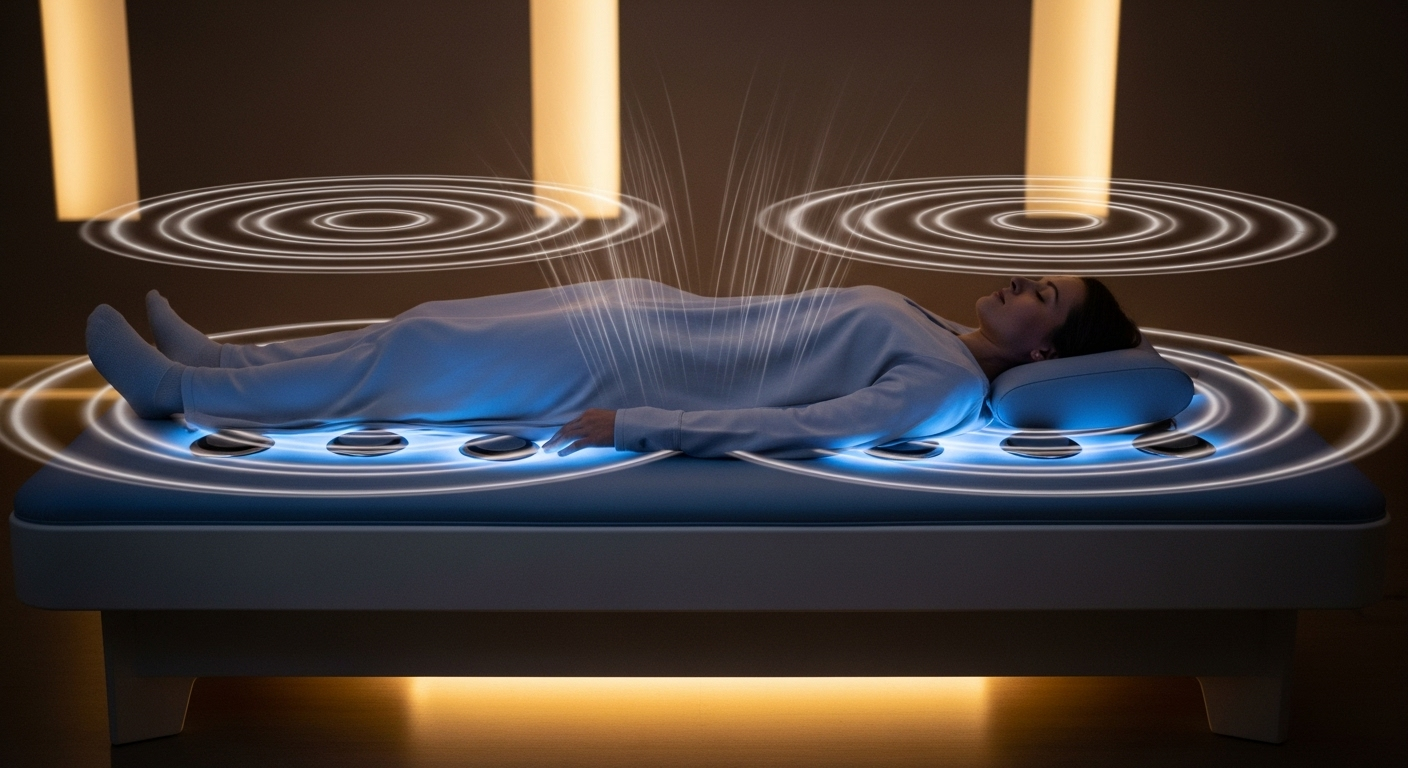Exploring the Healing Potential of Vibroacoustic Therapy
How can sound waves transform your physical and mental well-being? Imagine a therapy that not only soothes your mind but also penetrates deep into your body, promoting healing at a cellular level. Vibroacoustic therapy, an innovative approach to wellness, is gaining attention for its unique ability to combine the power of sound and vibration to enhance health.

The concept of using vibration for healing isn’t entirely new. Ancient cultures have long recognized the therapeutic potential of sound, from the use of singing bowls in Tibetan meditation practices to the rhythmic drumming in shamanic healing rituals. However, it wasn’t until the late 20th century that VAT began to take shape as a formalized therapy, thanks to the pioneering work of Norwegian therapist and educator Olav Skille.
The Science Behind Vibroacoustic Therapy
At its core, VAT is based on the principle that everything in the universe, including our bodies, is in a constant state of vibration. Each organ and tissue in our body has its own natural resonant frequency. When these frequencies are disrupted due to stress, illness, or injury, it can lead to various health issues. VAT aims to restore these optimal frequencies by introducing specific vibrations into the body.
Research into VAT has shown promising results across various health conditions. A study published in the Journal of Evidence-Based Integrative Medicine found that VAT significantly reduced pain and improved mood in fibromyalgia patients. Another study in the International Journal of Adolescent Medicine and Health reported improvements in motor function and quality of life for children with cerebral palsy after undergoing VAT sessions.
Applications in Physical Health
One of the most significant benefits of VAT is its potential to alleviate chronic pain. The vibrations are thought to stimulate circulation, reduce muscle tension, and promote the release of endorphins, the body’s natural pain-relieving chemicals. This makes VAT a promising complementary therapy for conditions such as arthritis, back pain, and sports injuries.
Beyond pain management, VAT has shown potential in improving cardiovascular health. The rhythmic vibrations may help to reduce blood pressure and improve circulation, potentially benefiting those with hypertension or peripheral artery disease. Some practitioners also use VAT to support lymphatic drainage, which can be particularly helpful for individuals dealing with edema or recovering from surgery.
Mental Health and Cognitive Benefits
The effects of VAT extend beyond physical health, offering significant benefits for mental well-being. The deep relaxation induced by the therapy can help reduce stress, anxiety, and symptoms of depression. Many users report improved sleep quality and a greater sense of overall well-being after regular sessions.
Interestingly, some research suggests that VAT may have cognitive benefits as well. A study published in the Journal of Music Therapy found that VAT improved attention and reduced hyperactivity symptoms in children with ADHD. The therapy’s ability to induce a state of focused relaxation may also enhance meditation practices and mindfulness techniques.
Integrating VAT into Holistic Wellness Programs
As interest in integrative and holistic health approaches grows, VAT is finding its place alongside other complementary therapies. Many wellness centers and spas now offer VAT sessions, often in combination with other treatments like massage or aromatherapy. Some healthcare providers are also beginning to incorporate VAT into their treatment plans for chronic pain management and rehabilitation programs.
For those interested in exploring VAT, it’s important to seek out certified practitioners who have undergone proper training. While VAT is generally considered safe for most individuals, it may not be suitable for everyone, particularly those with certain medical conditions or implanted devices. As with any new therapy, it’s advisable to consult with a healthcare provider before starting VAT sessions.
The Future of Vibroacoustic Therapy
As research into VAT continues to expand, we may see even more applications for this innovative therapy. Some areas of ongoing investigation include its potential use in cognitive rehabilitation for stroke patients, management of symptoms in neurodegenerative disorders, and support for individuals undergoing cancer treatment.
The development of portable VAT devices is also making the therapy more accessible for home use. These devices, ranging from vibrating mats to specially designed chairs, allow users to experience the benefits of VAT in the comfort of their own homes. However, it’s important to note that professional guidance is still recommended, especially when starting out.
Vibrant Insights: Tuning into Wellness
-
VAT sessions typically last between 20 to 40 minutes, with frequencies ranging from 30 to 120 Hz
-
Some VAT devices incorporate biofeedback technology to tailor the experience to individual users
-
Combining VAT with music therapy can enhance its relaxation and mood-boosting effects
-
Regular VAT sessions may help improve balance and coordination in older adults
-
Some athletes use VAT as part of their recovery routines to reduce muscle soreness and improve performance
-
VAT has shown promise in reducing symptoms of tinnitus in some individuals
As we continue to explore the intricate connections between sound, vibration, and health, vibroacoustic therapy stands out as a fascinating frontier in wellness. By tapping into the body’s natural frequencies, this innovative therapy offers a unique approach to healing that resonates with our growing understanding of the mind-body connection. Whether used as a standalone treatment or as part of a comprehensive wellness program, VAT holds the potential to harmonize our physical and mental well-being, offering a symphony of health benefits that may well shape the future of integrative medicine.




